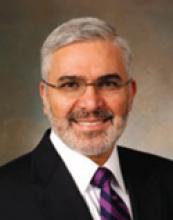Pharmacotherapy works for psychiatric disorders, and so does psychotherapy. That’s why I provide both to each of my patients and why Current Psychiatry articles address combination therapy (for example, see “Treating psychiatric reactions to medical illness,”). Many studies have concluded that combining pharmacotherapy and psychotherapy produces better outcomes than either treatment alone.
The apparent synergy between verbal therapy and medications is often observed but rarely investigated. Does it occur because two different mechanisms of action work better than one, such as when we combine a dopamine blocker (antipsychotic) with a GABA agonist (mood stabilizer) in a patient with bipolar mania? Or do drug therapy and psychotherapy share a common pathway that is enhanced when they are administered together, such as when we combine two antidepressants to manage a patient with treatment-resistant depression?
What is psychotherapy’s mechanism of action anyway, and do various modalities—cognitive-behavioral, interpersonal, or supportive—have the same psychobiological mechanism of action?
Psychotherapy’s mechanism
Given the limited evidence and lack of clear answers in this area, it is reasonable to use recent advances in neuroscience to speculate on how two ostensibly different treatment modalities improve clinical manifestations—the mood, thought, and behavior alterations—of psychiatric brain disorders.
Emerging discoveries over the past few years suggest the common pathway of psychotherapy and pharmacotherapy may be neuroplasticity—synaptogenesis, dendritic spines, and neurogenesis. In other words, talking to a person or giving that person a psychotropic are both likely to modify that person’s brain structure.
Unlike any other organ, the brain changes continuously in response to external and internal stimuli, such as verbal, visual, tactile, and olfactory perceptions as well as chemical stimuli. Neural tissue also changes in response to experiences—stressful or pleasurable, real or imagined, emotional or cognitive. Psychotherapy represents a targeted, strategic, and tactical approach to stimulate specific feelings, recollections, and insights. These are encoded into the recipient’s neurobiological pathways and ultimately translate into a change in behavior or symptoms.
Every therapeutic encounter produces neuroplasticity, and—as with drug therapy—the cumulative effect of repeated doses of psychotherapy consolidates the improvement. One way to conceptualize this mechanism is that psychotherapy refurbishes the patient’s brain structure at the molecular level, restoring resilience to a brain/mind system that was compromised by genetic factors or environmental stress.
‘Re-Wiring’ the brain
Where does pharmacotherapy fit into this model? Here, too, evidence is emerging that psychotropics may exert their therapeutic effect not only through neurochemical pathways but also by stimulating neurotropic factors and inducing beneficial neuroplastic changes.
Antidepressants, mood stabilizers, and atypical antipsychotics (but not conventional neuroleptics) have been shown to induce synaptogenesis, neurite extension, and neurogenesis. These actions result in “re-wiring” and “re-sculpting” brain regions such as the hippocampus and subventricular zone.
Psychotropics are known to trigger gene expression within hours for some genes and after days or weeks for others (which may explain short-term alleviation of some symptoms but delayed response of others). Psychotropics’ neuroprotective and neuroplastic effects also appear to help “replenish” brain tissue destroyed by the neurotoxic effects of repetitive psychotic, manic, or depressive relapses. Increases in nerve growth factor, brain-derived neurotropic factor, and fibroblast growth factor have been implicated in brain tissue regeneration in serious psychiatric disorders. Animal and human studies support this model, but more research is needed.
Accelerating Neuroplasticity
Using this neuroplasticity model, we can reasonably postulate that the convergence of psychotherapy with pharmacotherapy may accelerate and expedite the clinical improvement that hinges on “therapeutic restructuring” of certain neural pathways. I find it intriguing to think that by repairing brain tissue with two different stimuli—talking and medicating—we can mend the fractured mind of an ailing brain.
As neuroscientists explore more deeply this area of research, we clinicians will continue to use concomitant pharmacotherapy and psychotherapy to help our patients navigate the road to recovery.


